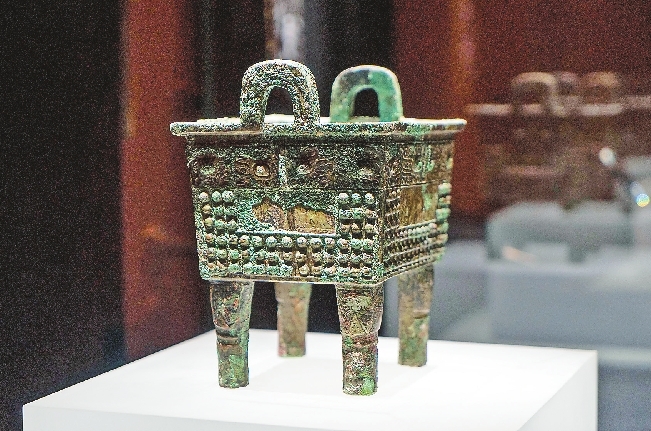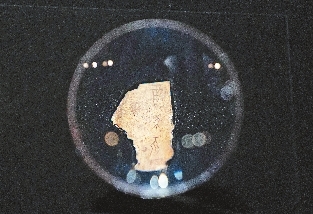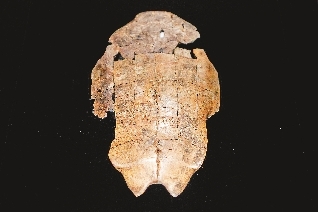



AS a series of events are held this month to commemorate the 120th anniversary of the discovery of oracle bone inscriptions, the spotlight has been brought to the ancient Chinese characters once again. The ancient Chinese language has drawn the world’s attention since its discovery back in 1899. For years, archaeologists and researchers have been fascinated by and dedicated to the mystery behind the characters. With the development of modern technologies, the mysterious shells and bones were given new life, inspiring the younger generations and spreading traditional Chinese culture in a new way. Oldest Chinese characters “Unlike the other four ancient scripts, oracle bone inscriptions did not disappear. They were handed down and evolved into today’s Chinese characters,” said Song Zhenhao, head of the research center of oracle bone inscriptions and Shang Dynasty (1,600-1,100 B.C.) history under the Chinese Academy of Social Sciences, and one of the leading scholars of the field. The other four ancient scripts, all extinct in history, include hieroglyphs from ancient Egypt, cuneiform from ancient Babylon, Indus script and Mayan glyphs from Mesoamerica, according to Song. Jiaguwen, or oracle bone inscriptions, are an ancient Chinese language named for their inscriptions on tortoise shells and animal bones. They are a primitive form of Chinese characters and the oldest fully-developed characters in China. Oracle bone inscriptions were first discovered in 1899 by Beijing academic and antiquarian Wang Yirong, although farmers had been unearthing the relics in Anyang, Henan Province for many years. Wang noticed symbols that looked like writing on animal bones and tortoise shells. The world-shocking find resulted in the identification of the earliest-known Chinese writing. The interpretations of the inscriptions on tortoise shells or bones, believed to be the earliest Chinese characters, gradually painted a picture of what Chinese society and people were like more than 3,000 years ago in the Shang Dynasty. The tortoise shells and bones bear testimony of the development of one of the world’s oldest writing systems, ancient beliefs and social systems, according to UNESCO. “Oracle bone inscriptions are of great cultural relic value, historical data value and academic research value. They are important materials for the reconstruction of ancient Chinese history and the perspective of social life in the Shang Dynasty,” Song said. In 120 years, researchers found around 4,500 characters on the oracle bones and identified about one-third of them. For thousands of years, despite the historical changes and social development, the structure of Chinese characters has never changed. “Many people learn Chinese characters by rote. Every component has its hieroglyphic origin. There is a story behind each Chinese character,” said Richard Sears from the United States, known as “Uncle Hanzi” (meaning “Chinese characters”), who has dedicated his life to the study and research of Chinese characters. Rediscover the ancient characters The city of Anyang in central China’s Henan Province became world-famous after Chinese archaeologists discovered a complex of ruins in Xiaotun Village in 1928, which were later confirmed to be the site of the Shang Dynasty capital Yin, and most known for its large discovery of oracle bone inscriptions. Today, the National Museum of Chinese Writing, located in Anyang, has welcomed visitors who are interested in the origin of Chinese characters. By the end of 2018, about 800 lectures on Chinese characters have been held by the museum. “Young kids are amazed when they learn that the few simple Chinese characters they’ve learned looked so similar to the characters from thousands of years ago,” said Yang Junhui, the organizer of the lectures. “Chinese characters are one of the oldest written languages, and they still exist today. It’s so impressive,” said Sears. He visited the museum and observed the oracle bone script closely when he attended a seminar to commemorate the 120th anniversary of the discovery of oracle bone inscriptions in Anyang last week. In addition to its practical functions, more and more people have begun to discover the beauty of the ancient characters and given them new connotations. Professor Chen Nan, with the Academy of Arts and Design of Tsinghua University, has designed stickers for WeChat, China’s most popular social media app, based on oracle bone inscriptions. Chen and his team integrated the ancient writing that lay on oracle bones with different themes, including the Chinese zodiac and pandas, and turned them into vivid stickers. They have been a hit on WeChat. “Oracle bone inscriptions are mostly pictographic ideographs. They have the pure visual aesthetic of ancient people, so they are appealing in modern designs,” said Chen. He believes that the spread of traditional characters in the past was a bit rigid and serious, which was daunting to most people. In designing the stickers, they took into account the needs of ordinary people and tried to make their designs appealing in today’s contexts. “Oracle bone inscriptions are not only excellent symbols of traditional culture. They can also be made into creative symbols in line with current trends,” Chen said. The study of oracle bone inscriptions has become an international discipline among researchers from dozens of countries and regions including Japan and the United States. It is an important tool for understanding early Chinese history and ancient civilization. A database of oracle bone inscriptions was launched last week as part of the 120th anniversary celebrations. More than 20,000 essays about the ancient script are now available and free online for anyone interested in the subject. More than 240 books will also be made available soon. “Oracle data is vast and complex. It was difficult to obtain in the past. The launching of the database is a milestone for the development of the study,” Song said. (Xinhua) | 
